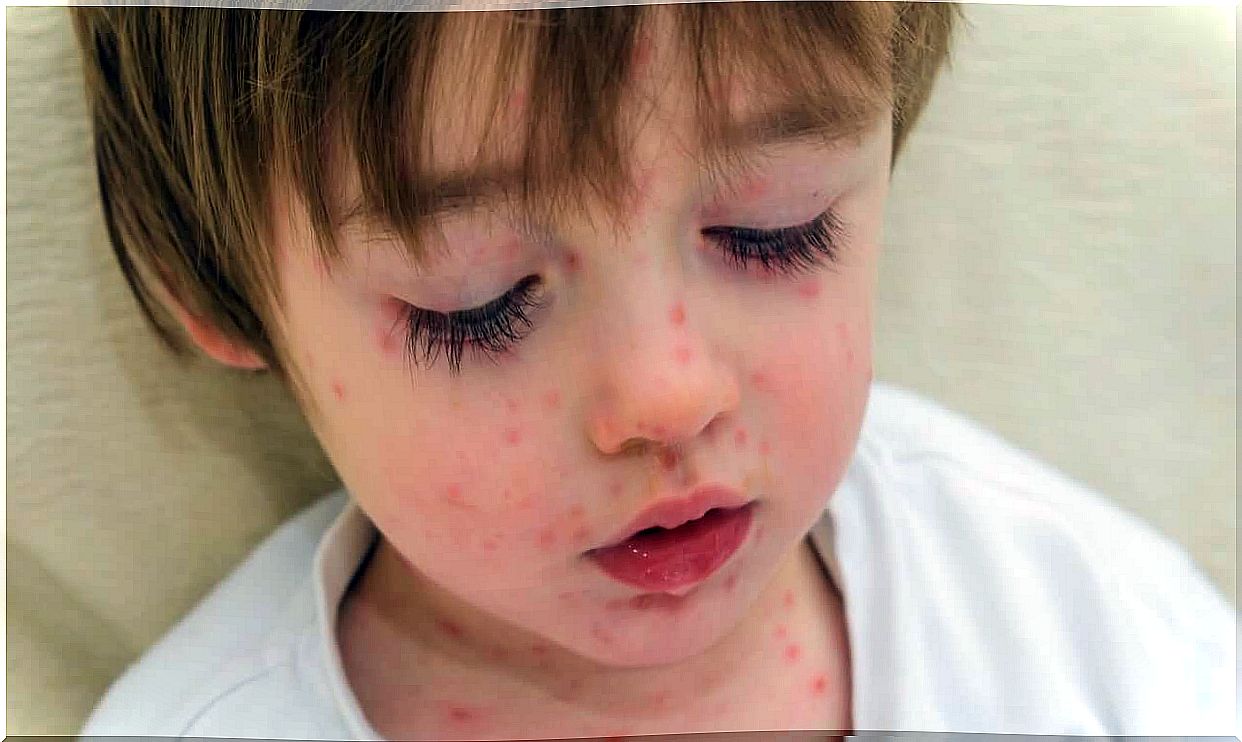What You Need To Know About Scarlet Fever You Can Read Here

When children suffer from scarlet fever, they do not always receive the right treatment. As a result, it sometimes takes longer for them to heal and get rid of the symptoms.
That is why it is important to learn everything about scarlet fever so that you can properly treat this disease.
Whether it’s someone close to you who has suffered from scarlet fever, or whether you yourself have suffered from it, aspects of this disease are often overlooked, especially when it comes to proper care.
In general, the treatment of scarlet fever usually consists of a series of measures that seem simple. However, these measures are vital.
Not only do they improve the health of the person concerned, but they also eliminate the possibility of long-term damage or major complications.
What do you remember about scarlet fever?
Scarlet fever is a childhood disease caused by a bacterium from group A streptococci. This bacterium is part of a family of germs that originate in the tonsils.
Group A Streptococci produce a harmful substance that causes a widespread skin rash of a fiery red color (hence the name scarlet fever).
To clarify, not all streptococcal infections produce these substances nor are all children susceptible to them.
To illustrate: a brother and sister who live in the same house can both contract this bacteria, but the course of the disease can differ per child. One child may be sensitive to the harmful substances and the other not.
Children who suffer from these rashes must be given special topical medications to treat the disease.
But how is the disease passed on? In principle, this is done through direct contact with the saliva of sick children. The saliva is transferred when talking, coughing or sneezing.
There may also be a potential risk of contamination from sharing objects or toys that children have had in their mouths. Therefore, isolation of the child is very important when dealing with scarlet fever. Although sometimes this may not matter, as infection occurs before the symptoms appear.
The Evolution of Scarlet Fever
The symptoms come on suddenly. The glands of the throat swell, which is very painful.
Then there are also other symptoms related to scarlet fever:
- Trembling and fever
- Vomit
- Lack of appetite
- Headache
- A sore throat
- Swollen almonds
- Apathy and generally lack of interest (your child probably won’t even want to play).
During the next 12 to 48 hours, a rash will appear around the groin, armpits and neck. Later, this rash will spread to the rest of the body. The red spots are visible all over the skin and are slightly raised.
At the same time, the tongue will be covered with a white layer. The tongue swells and turns bright red. Later still, the child’s skin will become flaky.
On the sixth or eighth day, the pain will subside. If at this time the fever reappears, this may be a signal. This could indicate a potential complication and should be treated immediately.
After the ninth day, the child’s skin begins to peel. This starts with the face and abdomen and finally spreads to the hands and feet.
What you need to know
Unfortunately , scarlet fever can recur several times during childhood because it is caused by several streptococci from different strains. This means that vaccination is not as effective as in other diseases.
Scarlet fever will not cause any complications if the correct medication is administered. If not, it can cause rheumatic fever, among other things. This fever causes inflammation of the heart, joints and blood vessels.
If left untreated, scarlet fever can also lead to Glomerulonephritis, a disease that quickly affects the kidneys.
Whether a rash is present or not, it is better to consult a doctor. He or she will probably prescribe antibiotics if necessary.
A medical specialist will determine which treatment is most suitable for the patient. It is important to be aware of the composition of the prescribed medication, as well as of the dosage and side effects in the short and long term.

How do you care for a child with scarlet fever?
- Rest is fundamental. Even when your child is able to go to school again, rest remains important. It is always good for your child to feel cared for and comfortable. It is best to prepare a diet that includes nutritious soups, ice creams and natural homemade drinks such as orange juice, grapefruit juice or lemonade.
- If your child doesn’t feel like eating, don’t force him. Instead, offer soft foods.
- If you have a cold water evaporator, now is the perfect time to use it. This is very helpful for a sore throat. You can also put warm or cold compresses around your little one’s neck to reduce the swelling and ease the pain.
- Make sure your child’s nails are trimmed short. Thus, he cannot hurt himself when the rash itches.
- Loving care. It may sound cliché but every person wants to feel loved and cared for when they are sick. By lovingly caring for your child, you not only improve physical health but also mental health. Spending a good time with your little patient is very important.
Whatever questions you have, it’s important to discuss them with your pediatrician. When it comes to your child’s health, act immediately. This will prevent things from getting worse and further complications from occurring.









